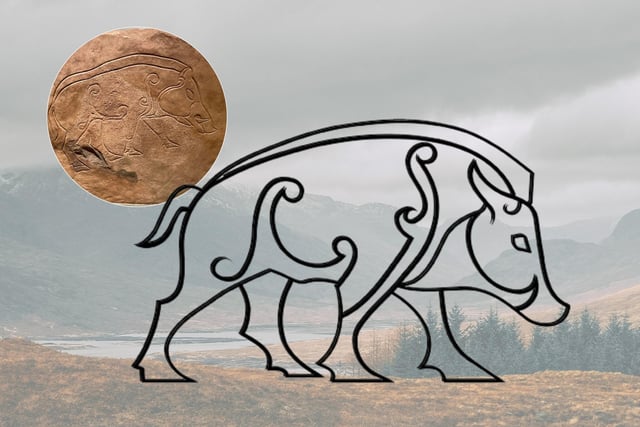The Picts are famous for erecting majestic standing stones that feature enigmatic symbols. While located across many regions of Scotland, we know areas like Aberdeenshire acted as one of the chief heartlands for northern Picts and this heritage is reflected even in the modern place names used today.
The Picts’ expertly carved symbol stones, according to scholars, may have served as territorial markers, represented Pictish names and ranks, or recorded marriage treaties. Pictish symbols are divided into three groups; Animal, Geometric and Everyday Object symbols, they usually occur in pairs and there are roughly 50 documented symbols.
Some historians suggest that the symbols predate their existence on stones and may have been used for tattoos as was typical with Pictish tribes. Ultimately, our knowledge of Pictish culture is limited to modern scholars’ interpretation, so here are fourteen Pictish stone symbols and their meaning according to them.
Some historians suggest that the symbols predate their existence on stones and may have been used for tattoos as was typical with Pictish tribes. Ultimately, our knowledge of Pictish culture is limited to modern scholars’ interpretation, so here are fourteen Pictish stone symbols and their meaning according to them.

5. Knocknagael Boar
This Pictish carving dates back to AD 600 and features a wild boar with spiky bristles along with a mirror case symbol. It was once located 3 miles south of Inverness but was relocated for conservation purposes in the early 1990s. It is thought that the mirror case symbol represented a woman while the boar symbolised a man. Therefore, a marriage pact could be the meaning behind this carving. Photo: via WikiCommons and Canva Pro

6. Mirror and Comb
In the context of Pictish stones, many theories have been suggested by scholars as to the meaning of the mirror and comb. Marriage symbols, female wealth and prestige, a woman’s memorial, and even mermaid association are all ideas that have been considered. Some even disregard the female association and consider if the mirror was symbolic of the afterlife as it reflected life on Earth. Photo: via WikiCommons and Canva Pro

7. Ardross Wolf
Found in Ardross, Ross-shire, this carving is now a popular exhibit at the Inverness Museum. It is not clear if the wolf held any particular meaning. Picts were associated with paganism and so perhaps animals like wolves were seen as totems who offered protection. Another theory suggests that the Pictish people simply identified with them by virtue of their nature i.e., for being keen hunters, fierce and protective of their pack. Photo: via WikiCommons and Canva Pro

8. Serpent and Z-rod
It has been suggested that the Serpent represents medicine or healing, although this is simply a theory. The Z-rod, much like the V-rod, is associated with broken arrows or spears, and therefore it is thought that the symbol could be symbolic of a warrior’s death. The Serpent is a recurring symbol on Pictish stones and aside from spiritual meanings it may have simply represented a coat of arms. Photo: via WikiCommons and Canva Pro


